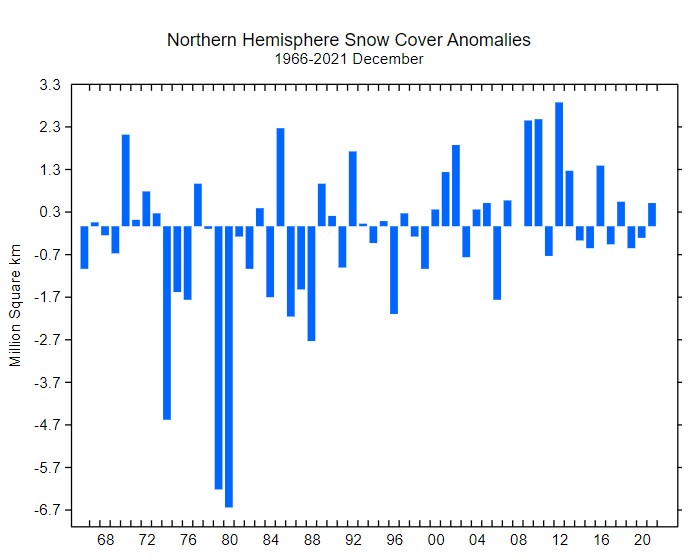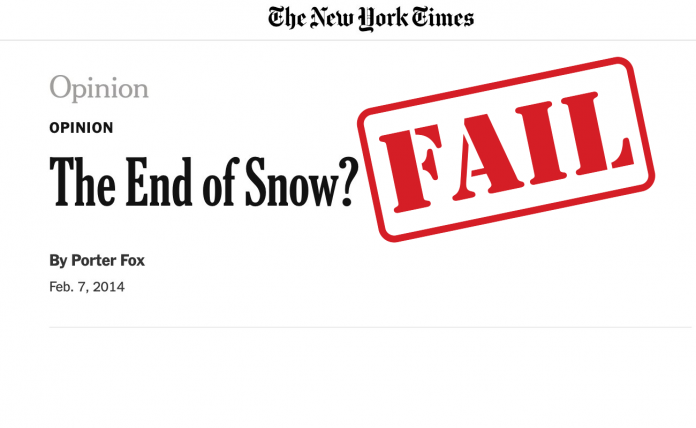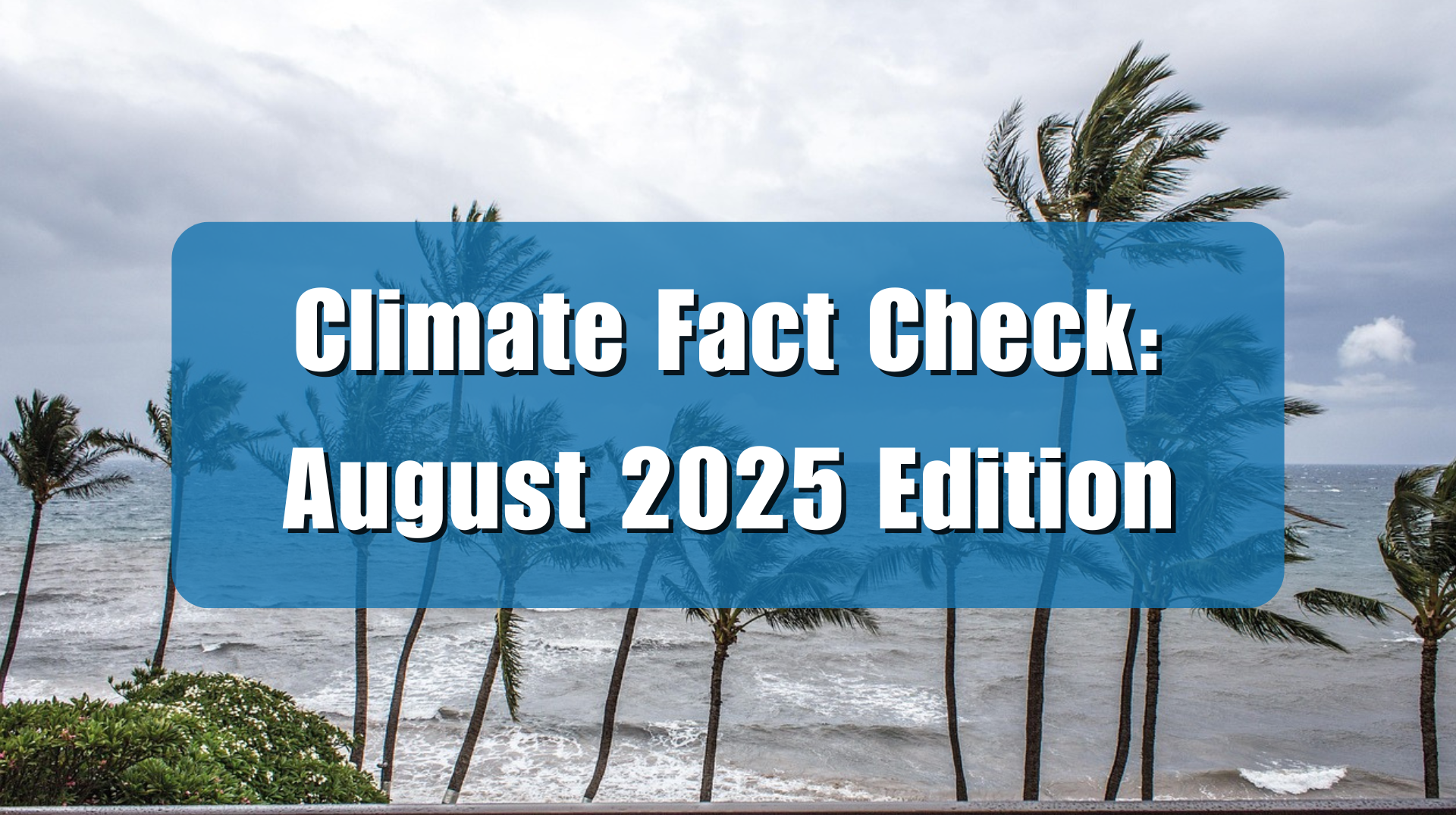Back in 2014, The New York Times (NYT) ran an opinion piece by Porter Fox, titled “The End of Snow?”
Fox, who in addition to being an avid skier, also opined on the climatological issues related to snow and skiing, said both will soon disappear, which is false. An excerpt from that 2014 article described his reasoning:
The planet has warmed 1.4 degrees Fahrenheit since the 1800s, and as a result, snow is melting. In the last 47 years, a million square miles of spring snow cover has disappeared from the Northern Hemisphere. Europe has lost half of its Alpine glacial ice since the 1850s, and if climate change is not reined in, two-thirds of European ski resorts will be likely to close by 2100.
The same could happen in the United States, where in the Northeast, more than half of the 103 ski resorts may no longer be viable in 30 years because of warmer winters. As far for the Western part of the country, it will lose an estimated 25 to 100 percent of its snowpack by 2100 if greenhouse gas emissions are not curtailed — reducing the snowpack in Park City, Utah, to zero and relegating skiing to the top quarter of Ajax Mountain in Aspen.
Never mind the fact that people don’t ski on Alpine glacial ice, which has declined since the 1850’s as would be expected coming out of the Little Ice Age, which, you guessed it, ended in 1850. If you believe Fox, ski resort sustaining snowfall is on a downhill slope. There’s only one problem – real-world data doesn’t show declining snow in the Northern Hemisphere.
This isn’t the first time the NYT has made claims like this, in January 2022 the newspaper ran a story titled Here’s How Climate Change and Covid Are Transforming Skiing, to which The Heartland Institute’s President James Taylor responded with a Climate Realism article NY Times Claims Skiing Is Endangered – As Snow Trends Grow and New Records Set.
Taylor wrote:
The New York Times published an article yesterday attempting to frighten skiers into becoming climate activists by claiming snow cover is diminishing throughout the country. “Skiing is an endangered sport,” claims the Times. In reality, objective data show that snow cover has been increasing during the past 30 years and current snowfall in the nation’s best ski country is setting new records this ski season.
Taylor is right, using the latest data available on snow cover from the Rutgers University Global Snow Lab (GSL) we see a different story than the NYT believes.
Utilizing satellite measurements, GSL keeps precise data on global, hemispheric, and continental snow cover dating back to the 1960s. According to the GSL data, the past 30 years have seen no decline in global or North American snow cover. Instead, data shows there has been a modest increase in winter snow cover during the past three decades since 1990.
The busiest week of the ski season is between Christmas and New Year’s, making December the month to watch for snow cover. The GSL graph (Figure 1) shows a clear increase in snowfall for December in the Northern Hemisphere. Other months of GSL data, including October, November, and January, also show similar increases over the past 30 years.

Perhaps Fox is thinking of today in comparison to the massive amounts of snow that occurred in the U.S. in the 1970’s, when global temperatures plummeted, and scientists were warning of a new ice age. The climate has certainly modestly warmed since then, but for the better, because back in the 1970’s there was so much record-breaking snow, some ski resorts could not actually open because people couldn’t get there.
Meanwhile, in the present, skiers and ski resort operators are taking advantage of the increased snowfall, a point which was not lost on The Wall Street Journal in their story U.S. Ski Resorts Pursue Extensive Expansions, Giving Local Home Prices a Major Lift.
An excerpt tells the story of success on the slopes:
With the ski operators booming, and seeing “no slowdown in sight,” it becomes clear that the media-stoked fears of “climate change is ruining your ski holiday” are nothing more than a snow job.





















